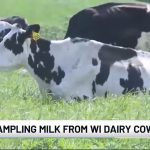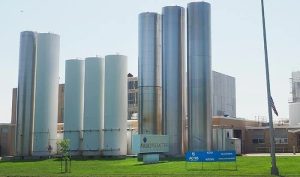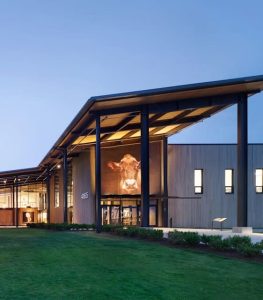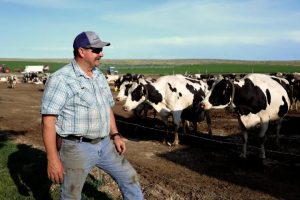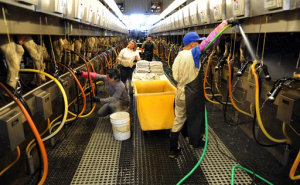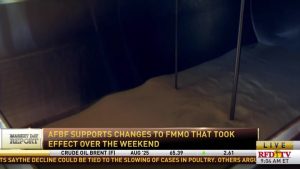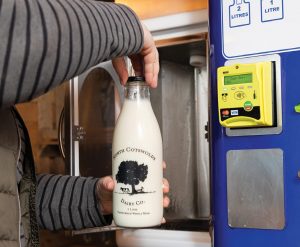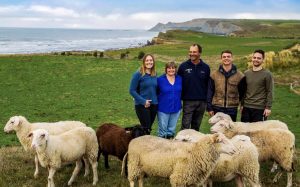
Team testing collars equipped with microphones and movement sensors to track cows’ eating and rumination behaviors.
Being a 21st-century dairy farmer is no small task. Rising labor shortages, growing herd sizes and the ever-present need to maintain animal health while keeping operations efficient leave little room for error.
At the University of Minnesota College of Veterinary Medicine, researcher Luciano Caixeta is leading a state-funded project focused on putting precision technology to work for dairy farmers. His work is supported by the Rapid Agricultural Response Fund, established by the Minnesota legislature in 1998 to allow researchers to respond to urgent issues and challenges facing Minnesota’s agricultural and natural resource industries.
With a grant for the 2024-25 biennium, Caixeta’s team has been testing whether wearable tech — like a Fitbit, but for cows — can help farmers make smarter decisions about when to treat animals and, just as importantly, when not to.
A smarter way to monitor cows
The project uses specialized collars equipped with microphones and movement sensors to track cows’ eating and rumination behaviors, which are key indicators of their metabolic health.
“These collars tell us how well the cow is doing based on what matters most: how much she’s eating and ruminating,” Caixeta said. “It’s a way to see how the cow is coping and whether she really needs our help.”
The team chose hyperketonemia (HK), a common and costly metabolic disorder, as a test case. In Minnesota’s high-producing dairy herds, hyperketonemia is a frequent and costly challenge, particularly in the days following calving when a cow’s energy needs skyrocket.
It has been associated with reduced milk production, impaired fertility and an increased risk of other diseases, all of which impact a farm’s bottom line. It’s also a serious animal welfare concern, as affected cows may suffer discomfort and long-term health setbacks if not properly managed. For producers already facing labor shortages, the condition adds pressure to make fast, effective decisions that impact both productivity and animal health.
Typically, cows diagnosed with HK are treated automatically. But the team’s previous research suggested many recover without help, meaning some treatments may be unnecessary. The current project set out to investigate whether data from wearable tech could help farmers more accurately decide which cows actually benefit from treatment.
“We found that there’s a group of cows that, even though they show signs of HK, can bounce back without intervention,” Caixeta said. “They’re not getting sick in a clinically meaningful way; they’re just coping with the intense physiological demands of early lactation.”
The implications are significant. If farmers can use this technology to identify which cows are truly at risk and which aren’t, they can allocate labor more efficiently, reduce unnecessary treatments and still maintain animal health.
But one of the biggest takeaways wasn’t about the cows; it was about the farms.
“Not all farms are the same,” Caixeta emphasized. “There’s huge variation between farms — different diets, different conditions, not to mention different technology being used — so the threshold for when a cow needs help will vary too. That’s why individualized data is so powerful.”
From case study to broader change
While the primary research focused on HK, the project has laid a foundation for broader applications. The team is now conducting follow-up research on how to define a truly “healthy” cow — not just one free from disease but one unlikely to need intervention in the near future.
“If we can identify the healthiest cows with confidence, we can focus our attention on the ones who are most likely to run into problems. We can also use the information to make better-informed breeding decisions for the long-term health of the herd,” Caixeta said. “It’s about working smarter, not harder.”
Though the research is ongoing, the team has already shared findings with regional and national producer groups, veterinarians and at international scientific conferences — nearly 10 outreach events in total. At least two academic publications are expected this year, and the research has drawn interest from industry partners looking to apply the insights more broadly.
“Ultimately, we want this work to go back to the farms to help farmers make better decisions, save time and take care of their animals more effectively,” Caixeta said.
With the support of the Rapid Agricultural Response Fund, Caixeta’s work exemplifies how targeted research can deliver real benefits to producers. By connecting cutting-edge technology with on-farm decision-making, this project is helping farmers manage herds more efficiently — one collar, one cow and one data point at a time.
You can now read the most important #news on #eDairyNews #Whatsapp channels!!!
🇺🇸 eDairy News INGLÊS: https://whatsapp.com/channel/0029VaKsjzGDTkJyIN6hcP1K


